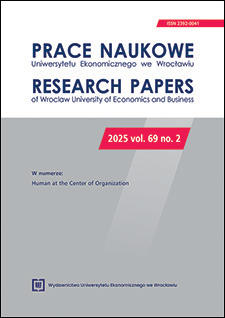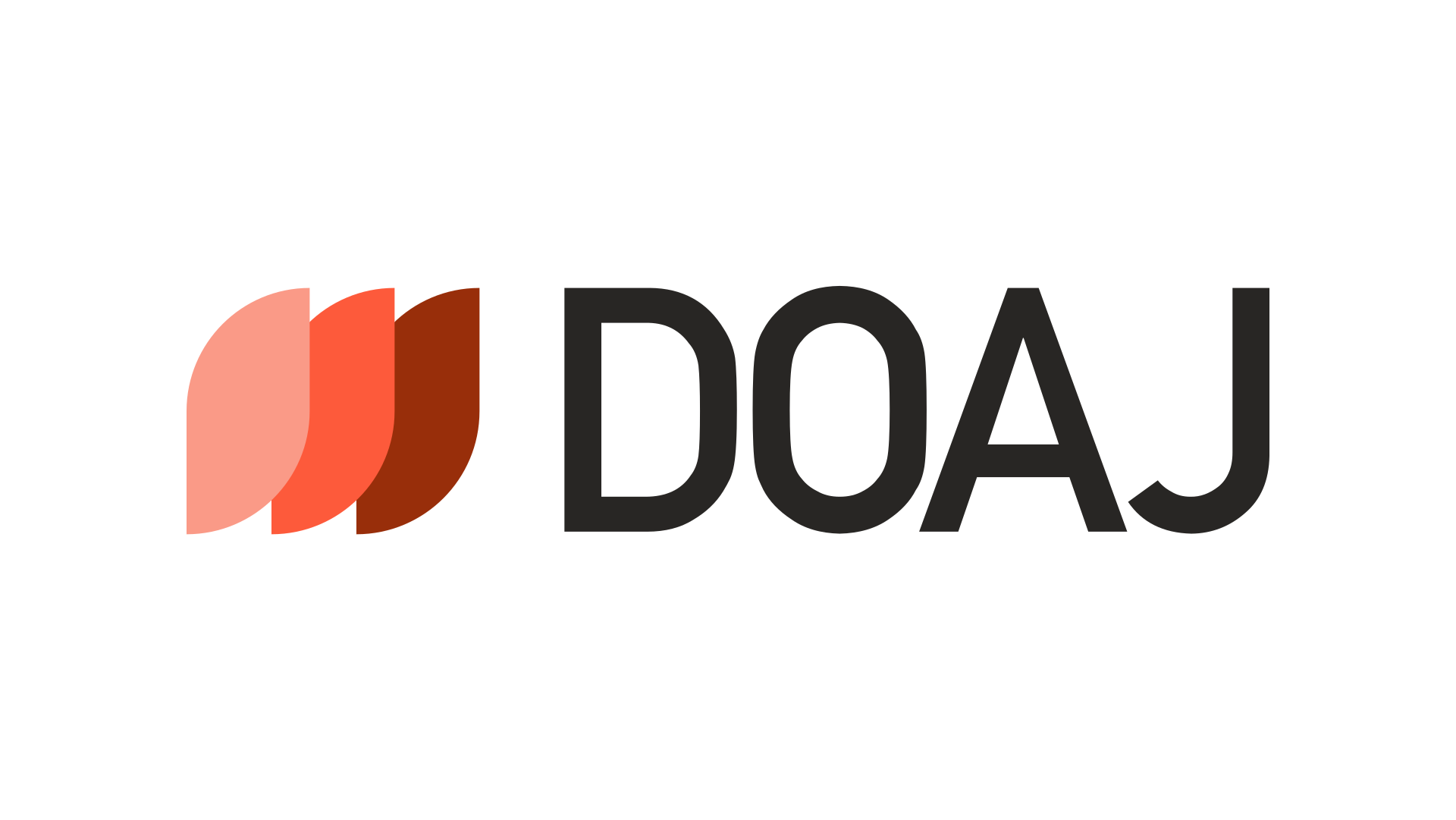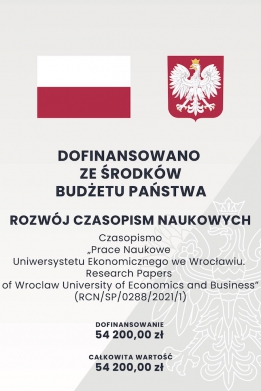Wpływ różnorodności wiekowej na identyfikację organizacyjną
DOI:
https://doi.org/10.15611/pn.2025.2.13Słowa kluczowe:
różnorodność wiekowa, identyfikacja organizacyjna, postawy w miejscu pracy, postrzegane wsparcie organizacyjneAbstrakt
Cel: Celem niniejszej pracy jest zbadanie wpływu różnorodności wiekowej na identyfikację orga-nizacyjną oraz ocena roli praktyk zarządzania zasobami ludzkimi (HR) i inkluzywnego klimatu organizacyjnego w kształtowaniu tej relacji.
Metodologia: Badanie obejmuje syntezę istniejącej literatury oraz badania empiryczne przepro-wadzone w 30 organizacjach na terenie Polski. Dane zostały zebrane metodami ilościowymi od mene-dżerów HR oraz pracowników. Weryfikacja hipotez została przeprowadzona za pomocą zaawanso-wanych analiz statystycznych.
Wyniki: Sama różnorodność wiekowa nie wykazuje bezpośredniego wpływu na identyfikację organi-zacyjną, jednak praktyki HR uwzględniające różnorodność wiekową oraz inkluzywny klimat organiza-cyjny znacząco pośredniczą w tej relacji.
Implikacje i rekomendacje: Uzyskane wyniki podkreślają znaczenie wdrażania praktyk HR, które uwzględniają różnorodność wiekową, oraz tworzenia inkluzywnego klimatu organizacyjnego, aby wzmocnić identyfikację pracowników z organizacją. Sugeruje się, aby przyszłe badania skupiły się na dalszym badaniu mechanizmów oraz kontekstów, w których różnorodność wiekowa wpływa na identyfikację organizacyjną, z uwzględnieniem różnic branżowych i kulturowych.
Oryginalność/wartość: Przedstawione badanie wnosi istotny wkład w zrozumienie dynamiki między różnorodnością wiekową a identyfikacją organizacyjną, oferując cenne wskazówki dla zarządzania zasobami ludzkimi oraz rozwoju organizacyjnego, promując tym samym inkluzywne i wspierające środowisko pracy.
Pobrania
Bibliografia
Adjo, J., Maybank, A., & Prakash, V. (2021). Building Inclusive Work Environments. Pediatrics, 148 (Supplement 2).
Ali, M., & French, E. (2019). Age Diversity Management and Organisational Outcomes: The Role of Diversity Perspectives. Human Resource Management Journal, 29(2), 287-307.
Appannah, A., & Biggs, S. (2015). Age-Friendly Organisations: The Role of Organisational Culture and the Participation of Older Workers. Journal of Social Work Practice, 29(1), 37-51.
Avery, D. R., McKay, P. F., & Wilson, D. C. (2007). Engaging the Aging Workforce: The Relationship between Perceived Age Similarity, Satisfaction with Coworkers, and Employee Engagement. Journal of Applied Psychology, 92(6), 1542.
Bal, P. M., & Dorenbosch, L. (2015). Age‐Related Differences in the Relations between Individualised HRM and Organisational Performance: A Large‐Scale Employer Survey. Human Resource Management Journal, 25(1), 41-61.
Baron, R. M., & Kenny, D. A. (1986). The Moderator–Mediator Variable Distinction in Social Psychological Research: Conceptual, Strategic, and Statistical Considerations. Journal of Personality and Social Psychology, 51(6), 1173.
Barrett, J., & Bourke, J. (2013). Managing for Inclusion: Engagement with an Ageing Workforce. Employment Relations Record, 13(1), 13-24.
Bellotti, L., Zaniboni, S., Balducci, C., Menghini, L., Cadiz, D. M., & Toderi, S. (2022). Age Diversity Climate Affecting Individual--Level Work-Related Outcomes. International Journal of Environmental Research and Public Health, 19(5), 3041.
Bergmann, A., Schmidt, S. L., Schreyer, D., & Torgler, B. (2016). Age and Organizational Identification: Empirical Findings from Professional Sports. Applied Economics Letters, 23(10), 718-722.
Boehm, S. A., Baumgaertner, M. K., Dwertmann, D. J., & Kunze, F. (2011). Age Diversity and its Performance Implications –Analysing a Major Future Workforce Trend. From Grey to Silver. Managing the Demographic Change Successfully, 121-141.
Boehm, S. A., & Kunze, F. (2014). Age Diversity and Age Climate in the Workplace. In Aging Workers and the Employee-Employer Relationship (pp. 33-55). Springer International Publishing.
Boehm, S. A., Kunze, F., & Bruch, H. (2014). Spotlight on Age‐Diversity Climate: The Impact of Age‐Inclusive HR Practices on Firm‐Level Outcomes. Personnel Psychology, 67(3), 667-704.
Boekhorst, J. A. (2015). The Role of Authentic Leadership in Fostering Workplace Inclusion: A Social Information Processing Perspective. Human Resource Management, 54(2), 241-264.
Bodla, A. A., Tang, N., Jiang, W., & Tian, L. (2018). Diversity and Creativity in Cross-National Teams: The Role of Team Knowledge Sharing and Inclusive Climate. Journal of Management & Organization, 24(5), 711-729.
Brooke, L., & Taylor, P. (2005). Older Workers and Employment: Managing Age Relations. Ageing & Society, 25(3), 415-429.
Chrobot-Mason, D., & Aramovich, N. P. (2013). The Psychological Benefits of Creating an Affirming Climate for Workplace Diversity. Group & Organization Management, 38(6), 659-689.
Cole, B. M., & Salimath, M. S. (2013). Diversity Identity Management: An Organizational Perspective. Journal of Business Ethics, 116, 151-161.
Dwertmann, D. J., & van Dijk, H. (2020). A Leader’s Guide to Fostering Inclusion by Creating a Positive Diversity Climate. In Inclusive Leadership (pp. 149-161). Routledge.
Ellwart, T., Bündgens, S., & Rack, O. (2013). Managing Knowledge Exchange and Identification in Age Diverse Teams. Journal of Managerial Psychology, 28(7/8), 950-972.
Fan, P., Song, Y., Fang, M., & Chen, X. (2023). Creating an Age-Inclusive Workplace: The Impact of HR Practices on Employee Work Engagement. Journal of Management & Organization, 29(6), 1-19.
Feldman, D. C. (2014). Workforce Diversity in the United States: Challenges and Opportunities for HR Management. Human Resource Management Review, 24(4), 175-185.
Findlay, I. M., & Kowbel, J. (2013). Engaging an Age-Diverse Workplace: Revisiting a Business Opportunity and Challenge. Journal of Business & Financial Affairs, 2(2), 1-2.
Froidevaux, A., Alterman, V., & Wang, M. (2020). Leveraging Aging Workforce and Age Diversity to Achieve Organizational Goals: A Human Resource Management Perspective. In S. Czaja, J. Sharit, & J. James (Eds.), Current and Emerging Trends in Aging and Work (pp. 33-58). Springer.
Goswami, S., & Goswami, B. K. (2018). Exploring the Relationship between Workforce Diversity, Inclusion and Employee Engagement. Drishtikon: A Management Journal, 9(1), 65-89.
Hameed, I., Roques, O., & Ali Arain, G. (2013). Nonlinear Moderating Effect of Tenure on Organizational Identification (OID) and the Subsequent Role of OID in Fostering Readiness for Change. Group & Organization Management, 38(1), 101-127.
Harrison, D. A., & Klein, K. J. (2007). What’s the Difference? Diversity Constructs as Separation, Variety, or Disparity in Organizations. Academy of Management Review, 32(4), 1199-1228.
Hertel, G., IJM Van der Heijden, B., H. de Lange, A., & Deller, J. (2013). Facilitating Age Diversity in Organizations – Part II: Managing Perceptions and Interactions. Journal of Managerial Psychology, 28(7/8), 857-866.
Ingusci, E. (2018). Diversity Climate and Job Crafting: The Role of Age. The Open Psychology Journal, 11, 105-111.
Kembu, A. S., & Nang’oni, W. U. S. (2021). Influence of Age Diversity on Organization Performance at Kenya Urban Roads Authority. Journal of Management Info, 8(4), 220-230.
Klimchak, M., Ward, A. K., Matthews, M., Robbins, K., & Zhang, H. (2019). When Does What Other People Think Matter? The Influence of Age on the Motivators of Organizational Identification. Journal of Business and Psychology, 34, 879-891.
Kossek, E. E., & Zonia, S. C. (1993). Assessing Diversity Climate: A Field Study of Reactions to Employer Efforts to Promote Diversity. Journal of Organizational Behavior, 14(1), 61-81.
Kunze, F., Boehm, S. & Bruch, H. (2011). Age Diversity, Age Discrimination Climate and Performance Consequences – A Cross Organizational Study. Journal of Organizational Behavior, 32(2), 264-290.
Kunze, F., Boehm, S., & Bruch, H. (2013). Organizational Performance Consequences of Age Diversity: Inspecting the Role of Diversity‐-Friendly HR Policies and Top Managers’ Negative Age Stereotypes. Journal of Management Studies, 50(3), 413-442.
Li, Y., Gong, Y., Burmeister, A., Wang, M., Alterman, V., Alonso, A., & Robinson, S. (2021). Leveraging Age Diversity for Organizational Performance: An Intellectual Capital Perspective. Journal of Applied Psychology, 106(1), 71.
Luijters, K., Van der Zee, K. I., & Otten, S. (2008). Cultural Diversity in Organizations: Enhancing Identification by Valuing Differences. International Journal of Intercultural Relations, 32(2), 154-163.
Macdonald, J. L., & Levy, S. R. (2016). Ageism in the Workplace: The Role of Psychosocial Factors in Predicting Job Satisfaction, Commitment, and Engagement. Journal of Social Issues, 72(1), 169-190.
Mael, F., & Ashforth, B. E. (1992). Alumni and Their Alma Mater: A Partial Test of the Reformulated Model of Organizational Identification. Journal of Organizational Behavior, 13(2), 103-123.
Marique, G., Stinglhamber, F., Desmette, D., Caesens, G., & De Zanet, F. (2013). The Relationship between Perceived Organizational Support and Affective Commitment: A Social Identity Perspective. Group & Organization Management, 38(1), 68-100.
McCann, R. M., Kellermann, K., Giles, H., Gallois, C., & Viladot, M. A. (2004). Cultural and Gender Influences on Age Identification. Communication Studies, 55(1), 88-105.
Mor Barak, M. E. (2000). The Inclusive Workplace: An Ecosystems Approach to Diversity Management. Social Work, 45(4), 339-353.
Mor Barak, M. E., Cherin, D. A., & Berkman, S. (1998). Organizational and Personal Dimensions in Diversity Climate. Ethnic and Gender Differences in Employee Perceptions. The Journal of Applied Behavioral Science, 34(1), 82-104.
Neill, M. S., Men, L. R., & Yue, C. A. (2020). How Communication Climate and Organizational Identification Impact Change. Corporate Communications: An International Journal, 25(2), 281-298.
Pinto, A. M. G. L. R. S., da Silva Ramos, S. C. M., & Nunes, S. M. M. D. (2014). Managing an Aging Workforce: What is the Value of Human Resource Management Practices for Different Age Groups of Workers? Tékhne, 12, 58-68.
Rabl, T., & Triana, M. D. C. (2014). Organizational Value for Age Diversity and Potential Applicants’ Organizational Attraction: Individual Attitudes Matter. Journal of Business Ethics, 121, 403-417.
Rezai, M., Lindsay, S., Ahmed, H., & Vijayakumar, A. (2023). Workplace Inclusion: A Scoping Review of the Qualitative Literature. Work, 75(1), 59-73.
Riach, K. (2009) Managing ‘Difference’: Understanding Age Diversity in Practice. Human Resource Management Journal, 19(3), 319-335.
Riach, K. (2011). Situating Age (in) Equality within the Paradigm and Practices of Diversity Management. In E. Parry, & S. Tyson (Eds.), Managing an Age-Diverse workforce (pp. 43-58). Palgrave Macmillan.
Rudolph, C. W., Toomey, E. C., & Baltes, B. B. (2017). Considering Age Diversity in Recruitment and Selection: An Expanded Work Lifespan View of Age Management. The Palgrave Handbook Of Age Diversity And Work, 607-638.
Rudolph, C. W., & Zacher, H. (2021). Age Inclusive Human Resource Practices, Age Diversity Climate, and Work Ability: Exploring Between- and Within-Person Indirect Effects. Work, Aging and Retirement, 7(4), 387-403.
Sammarra, A., Profili, S., Maimone, F., & Gabrielli, G. (2017). Enhancing Knowledge Sharing in Age-Diverse Organizations: The Role of HRM Practices. In Age Diversity in the Workplace (pp. 161-187). Emerald Publishing.
Sammarra, A., Profili, S., Peccei, R., & Innocenti, L. (2021). When is Age Dissimilarity Harmful for Organisational Identification? The Moderating Role of Age Stereotypes and Perceived Age-Related Treatment. Human Relations, 74(6), 869-891.
Shih, M., & Young, M. J. (2016). Identity Management Strategies in Workplaces with Color-Blind Diversity Policies. In A. H. Neville, E. M. Gallardo, & W. D. Sue (Eds.), The Myth of Racial Color Blindness: Manifestations, Dynamics, and Impact. (pp. 261-274). American Psychological Association.
Shih, M., Young, M. J., & Bucher, A. (2013). Working to Reduce the Effects of Discrimination: Identity Management Strategies in Organizations. American Psychologist, 68(3), 145.
Stone, D. L., & Tetrick, L. E. (2013). Understanding and Facilitating Age Diversity in Organizations. Journal of Managerial Psychology, 28(7/8), 725-728.
Teclaw, R., Osatuke, K., Fishman, J., Moore, S. C., & Dyrenforth, S. (2014). Employee Age and Tenure within Organizations: Relationship to Workplace Satisfaction and Workplace Climate Perceptions. The Health Care Manager, 33(1), 4-19.
Verma, A. (2020). Critical Review of Literature of the Impact of Workforce Diversity (Specifically Age, Gender, and Ethnic Diversity) on Organizational Competitiveness. Asian Journal of Management, 11(1), 125-130.
Wolfson, N., Kraiger, K., & Finkelstein, L. (2011). The Relationship between Diversity Climate Perceptions and Workplace Attitudes. The Psychologist-Manager Journal, 14(3), 161-176.
Pobrania
Opublikowane
Licencja
Prawa autorskie (c) 2025 Łucja Waligóra

Utwór dostępny jest na licencji Creative Commons Uznanie autorstwa – Na tych samych warunkach 4.0 Miedzynarodowe.
Accepted 2025-02-03
Published 2025-07-22









